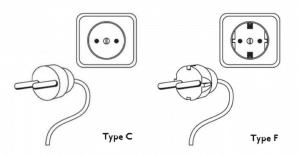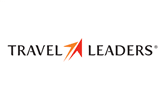What’s The Time In Italy? Tipping in Italy? What’s the Average Temperature in Italy? Here’s the Answers.
No other country as Italy is so immediately recognizable on a map; a high-heeled boot and the Sicilian triangular “ball” form a unique silhouette. Italy stretches from the high, glacier-topped Alps to half-way across the Mediterranean Sea, with a coastline extending over 4,411 miles. About 75% of the country is mountainous and even though much of the terrain is unsuitable for farming, about 1.4 million of its people still work in agriculture. Most farms are small holdings (the average farm has only 17 acres). Northern Italy primarily produces grains, sugar beets, soybeans, meat, and dairy products, while the south specializes in producing fruit, vegetables, olive oil, wine, and durum wheat.
With just over 59 million inhabitants, Italy is the fifth-most densely populated country in Europe. Since WWII, it has changed from an agriculturally based economy to an industrial state ranked as the world’s seventh largest industrial economy. Today, Italy belongs to the G-8 (Group of 8 industrialized nations); it is a member of the European Union and the Organization for Economic Cooperation and Development (OECD). It has an excellent system of roads and an average of one car for every three citizens. Modern superhighways run the length of the peninsula, and tunnels through the Alps link the highway system to those of neighboring countries. Railroad lines connect all major Italian cities, and a high-speed railway links Rome, Florence, and Milan.
Italy is a new nation with a very old civilization. Until 1860, it was still a myriad of different states often at war with each other. Despite its unity as a Republic today, it is still fragmented into a deeply-rooted mosaic of regional cultures. Italians are strongly attached to their towns, neighborhoods, and family values which form the background of Italian society. They are warm, outgoing people. Time is not necessarily money to them, and the average Italian will always find the time to enjoy a good meal or drink a black espresso (28 million cups of coffee are sold every day!).
Italian food varies greatly from region to region. In the north, flat, ribbon-shaped pastas with cream sauces are most popular; in the south, the favorite pasta is macaroni served with tomato-based sauces. The most popular meats are veal and pork. Shopping possibilities are endless with magnificent craftwork and designer goods plentifully available.
Italy has the most beautiful architecture in the world. According to UNESCO, over 50% of the world’s great works of art are found here. Take the masterpieces of Botticelli, Leonardo da Vinci, Michelangelo, Tintoretto,
and Caravaggio; the operas of Verdi and Puccini; and the cinema of Federico Fellini. Add the architecture of Venice, Florence, and Rome and you have just a fraction of its treasures from over the centuries.
Do US Citizens Need a Visa For Italy?
Do US Citizens Need a Visa For Italy?
Do US citizens need a visit to Italy? Visas to Italy are not required for US citizens. If you hold a passport from another country, please check with your local consulate about requirements for travel to Italy. All passengers traveling internationally are required to have a passport. Please carry proper identification (your passport) on you and do not leave it in your suitcase or hotel room.
It is advisable to carry your passport with you at all times. Also make a copy of your passport or take a photo and keep it on your mobile phone. One should always check with the United States Department for latest travel advisories.
Italy Country Code Phone
Italy Country Code Phone
The country code for Italy is 39. When calling to Italy from overseas, dial your international access code (011 from the US/Canada), followed by the country code, area code, and phone number. Phone numbers in Italy are eight digits in length. Dialing from the US/Canada: 011 39# ### ####.
What’s the Currency In Italy?
What’s the Currency In Italy?
The official currency of Italy is the Euro.
Bank hours 8:30 a.m. to 1:15/30 p.m. and 3/3:30 p.m. to 4/4:30 p.m., Monday through Friday.
Euro coins differ according to country, but they can be used in any Eurozone state. Banknotes are of uniform EU design (depicting European architectural styles throughout seven ages, from Classical to Modern times).
Keep receipts until you have left restaurants or bars, as occasionally there are spot tax checks on owners. Credit cards are accepted in the larger Italian cities (mostly Visa and MasterCard), and you should have no problems using them in shops and restaurants. However, smaller shops, especially those in rural locations, may ask you to pay in cash or have a minimum amount required to use a credit card. Prior to your Italy travels we suggest you check local currency conversion rates.
Shopping In Italy
Shopping In Italy
The following budget guidelines are just approximate values or starting values for meals and are per person. Actual prices will vary widely by restaurant and city within a country but below are some averages as provided by our experienced personnel.
- The approximate cost of a soft drink/mineral water/coffee is €3-5.
- An average lunch consisting of a salad or sandwich and a soda or water starts at approximately €15.
- Dinner at a mid-range restaurant with dessert and a non-alcoholic beverage starts at approximately €30-40 (seafood will be slightly more expensive).
Please note that soft drinks and mineral water are often as expensive, if not more expensive than wine or beer.
Shopping specialties: craftwork, designer goods.
Lemon flavored/scented products are popular specialties in Sorrento.
Anyone purchasing counterfeit items such as CDs/DVDs, bags, wallets, watches, sunglasses etc. risks a substantial fine (equivalent to thousands of dollars); plain clothes policemen circulate in crowds.
Sales tax or VAT (value added tax) is included on price tags. To obtain VAT refunds (which may take up to three months to process), special forms usually have to be stamped by Customs; please ask for a tax-free shopping form with each purchase and follow the instructions for completion. Customs import charges on items shipped home are not included in purchase prices.
Tipping In Italy
Tipping In Italy
Where restaurant service charges are already included, round up the check by the equivalent of a
few Dollars to show appreciation; otherwise 10% is a reasonable amount, depending on customer satisfaction/quality of service. In most Italian restaurants there is also a per person cover charge, which will be added to your check.
- Taxi fares are usually rounded up to the nearest €1-2.
- Tip hotel staff €1 for room service.
- A few small denomination Euro coins will be needed for public toilets.
- In Venice, a tip to water taxi staff is customary.
Electricity In Italy. Electrical Adapter for Italy
Electricity In Italy. Electrical Adapter for Italy
Voltage for outlets is 220V. North American voltage is generally 110V. Therefore, you will need a converter for your travels. Adapters will be necessary to adapt your plug into the outlet, but these may not convert the voltage, so both devices are necessary.
Prior to using personal electrical appliances in Italian hotels, please check the suitability with Reception. Italy uses a round, 2-prong plug which looks like:

Average Temperature In Italy
Average Temperature In Italy
Italy has hot summers and cold winters. The south experiences mild, wet winters and very hot summers. Rain generally falls in October, January and early spring. Pack lightweight clothing with a few warm layers in spring and early fall, plus rain gear. In winter, bring a jacket in the south and a warm overcoat in the north. Summers can be hot and humid, so bring light summer clothes with a light jacket or sweater for evening.
To help you plan, below are average low and high temperatures for Italy.
|
Month |
Rome |
Venice |
Lake Maggiore |
Sorrento |
Florence |
|
|
January |
39/55°F |
31/43°F |
26/46°F |
44/53°F |
35/49°F |
|
|
February |
40/56°F |
33/47°F |
27/50°F |
44/53°F |
36/53°F |
|
|
March |
43/59°F |
40/54°F |
34/58°F |
46/57°F |
40/60°F |
|
|
April |
47/63°F |
46/61°F |
40/62°F |
50/62°F |
46/68°F |
|
|
May |
54/71°F |
55/70°F |
50/71°F |
55/69°F |
53/75°F |
|
|
June |
61/77°F |
61/76°F |
56/78°F |
62/77°F |
58/84°F |
|
|
July
|
66/83°F |
65/81°F |
59/82°F |
66/82°F |
63/89°F |
|
|
August |
67/83°F |
64/81°F |
59/81°F |
68/84°F |
62/88°F |
|
|
September |
62/79°F |
59/74°F |
52/71°F |
64/78°F |
58/81°F |
|
|
October |
56/71°F |
50/64°F |
46/62°F |
57/69°F |
51/69°F |
|
|
November |
46/62°F |
39/52°F |
35/52°F |
51/62°F |
42/58°F |
|
|
December |
42/57°F |
33/45°F |
28/45°F |
46/55°F |
37/50°F |
To convert to Celsius, subtract 30, then divide by 2. While not exact, this simple formula will give a close estimation.
CUSTOMS AND CULTURE
CUSTOMS AND CULTURE
Pre-vacation reading for Italy: A Traveller’s History of Italy by Valerio Lintner, The New Italians by Charles Richards, or Italian Neighbours by Tim Parks.
Italian Food in Italy
Italian Food in Italy
Regional pasta dishes and cheeses, salamis, and cured meats (including ham and melon), pizza and focaccia, veal escalopes, herb-flavored meat and sauces, stuffed vegetables, and fine wines.
Eggs, bacon, steaks, and other meats may be cooked very lightly, as this is the way usually enjoyed locally; ask chefs to prepare them the way you prefer.
In larger bars and cafés, and at “Autogrills,” normally you decide what you would like, then stand in line to pay before taking your ticket to the barman to order. You can eat your meal/snack standing at the bar or at tables. Alternatively, there is a sit-down table service, which incurs a service charge.
Italian food you know and love from back home may differ quite surprisingly from the local reality and the ‘typical’ Italian fare you may have in mind. You may be surprised that, contrary to expectations, the warm, effusive service you receive in restaurants in other parts of the world is not necessarily the norm.
A FEW WORDS OF THE LOCAL LANGUAGE
A FEW WORDS OF THE LOCAL LANGUAGE
Italian:
Good morning/day: Buongiorno, Good evening: Buonasera, Hi: Ciao, Please: Per favore, Thank you:Grazie, You’re welcome: Prego, Yes: Sì, No: No, Do you speak English?: Parla inglese?, I don’t understand: Non capisco, How much?: Quanto costa?, 1: Uno, 2: Due, 3: Tre, 4: Quattro, 5: Cinque, 6: Sei, 7: Sette, 8: Otto, 9: Nove, 10: Dieci, Where is…?: Dov’è…?, Telephone: Telefono, Bathroom: Toilette,Tea: Té, Coffee: Caffé, Bottled water: Acqua minerale (carbonated=gassata, non-carbonated=naturale),Cheers!: Salute!, Restaurant check/bill: Il conto, Have a nice day!: Buona giornata!
US DEPARTMENT OF STATE COUNTRY INFORMATION
US DEPARTMENT OF STATE COUNTRY INFORMATION
Additional country-specific information for US citizens can be found on the US Government’s website www.travel.state.gov. Here, you can find the most up-to-date information about destination descriptions, passports/visas, safety and security, transportation, travel local laws, alerts/warnings, vaccinations, and more. For citizens of other nations, we recommend you consult your local consulate for travel information, regulations, and requirements.



